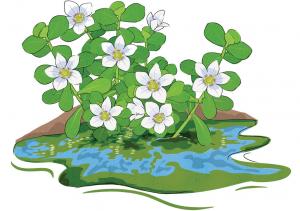
Integrating algae as an irrigation technique can boost water retention and support sustainable cultivation of medicinal plants like Brahmi.

Through rainwater harvesting, green pledges, and online campaigns, one educator proves how simple steps can create lasting ripples of change.

This entry won the second prize in the Class 6–8 category of the Dialogue Dhamaka Contest. This comic contest invites young eco-enthusiasts to give Babbi her voice—capturing wit, wisdom, and critical thinking about food and climate. Participants explore Babbi’s world, learn from her adventures, and craft dialogues that bring her quirky insights into life. The most creative entries are edited and published here to celebrate their talent.

This entry won the second prize in the Class 9–10 category of the Dialogue Dhamaka Contest. This comic contest invites young eco-enthusiasts to give Babbi her voice—capturing wit, wisdom, and critical thinking about food and climate. Participants explore Babbi’s world, learn from her adventures, and craft dialogues that bring her quirky insights into life. The most creative entries are edited and published here to celebrate their talent.

This entry won the first prize in the Class 9–10 category of the Dialogue Dhamaka Contest. This comic contest invites young eco-enthusiasts to give Babbi her voice—capturing wit, wisdom, and critical thinking about food and climate. Participants explore Babbi’s world, learn from her adventures, and craft dialogues that bring her quirky insights into life. The most creative entries are edited and published here to celebrate their talent.

An exhibition of innovative ideas, offering solutions in the sphere of climate change, hosted on 30 January 2024 at the India Habitat Centre, New Delhi. ************ As part of the Green Schools Carnival 2024, the Green Schools Programme (GSP) of the Centre for Science and Environment (CSE) hosted The Solutions Showcase...

Between land and water lies a quintessential zone of wetlands. Acting as sponges during surging monsoons and blissful oasis during scorching summers, these marshlands are integral to our climate and our Earth. An abode of exotic plants, birds and animals, they thrive and flourish with biodiversity. Our greed is throttling these water bodies. Across the country, there are numerous stories of urban wetlands disappearing because of encroachment, environmental degradation and climate change. As summers hit their peak and the usual scramble for water begins in many parts of the country, join Susmita Sengupta on an exploratory tour. …

The Mission and the Mangoes is a work of fiction that sets its premise around a dystopic, water-starved Earth where unrestrained mining, drilling and the exhaustion of earth’s resources is rendering the planet unlivable. The young author of the book, 12-year-old Hena Parveen, tries to marry a futuristic setting where technological advancements such as humanoid robots and regular space exploration are a reality, with the Earth’s ecosystem that is hurtling towards an inevitable collapse. Interestingly, all this does not take place in a far-fetched future...

In summers this year, some European rivers had dried substantially, causing drought in many parts of the region. It revealed to their surface, some ancient stones with intricate engravings on them. Their markings used to indicate the water-level of these rivers, which served as a common forecasting tool for famines. Such stones were called hunger stones. One such is disclosed at the banks of the Elbe River. Dated to 1616 AD, its rock is etched with a warning in German...

A desire for a magazine that focuses on well-identified environmental concerns and concrete tangible solutions. ************************************************************************************* It is our collective responsibility to maintain our earth as a habitable place for our present and future. Today, more than ever before, we are facing environmental challenges that can spiral into major crises unless we take urgent corrective measures. We have to strive to execute our actions points and Gobar Times provides us a wonderful platform to achieve them...

